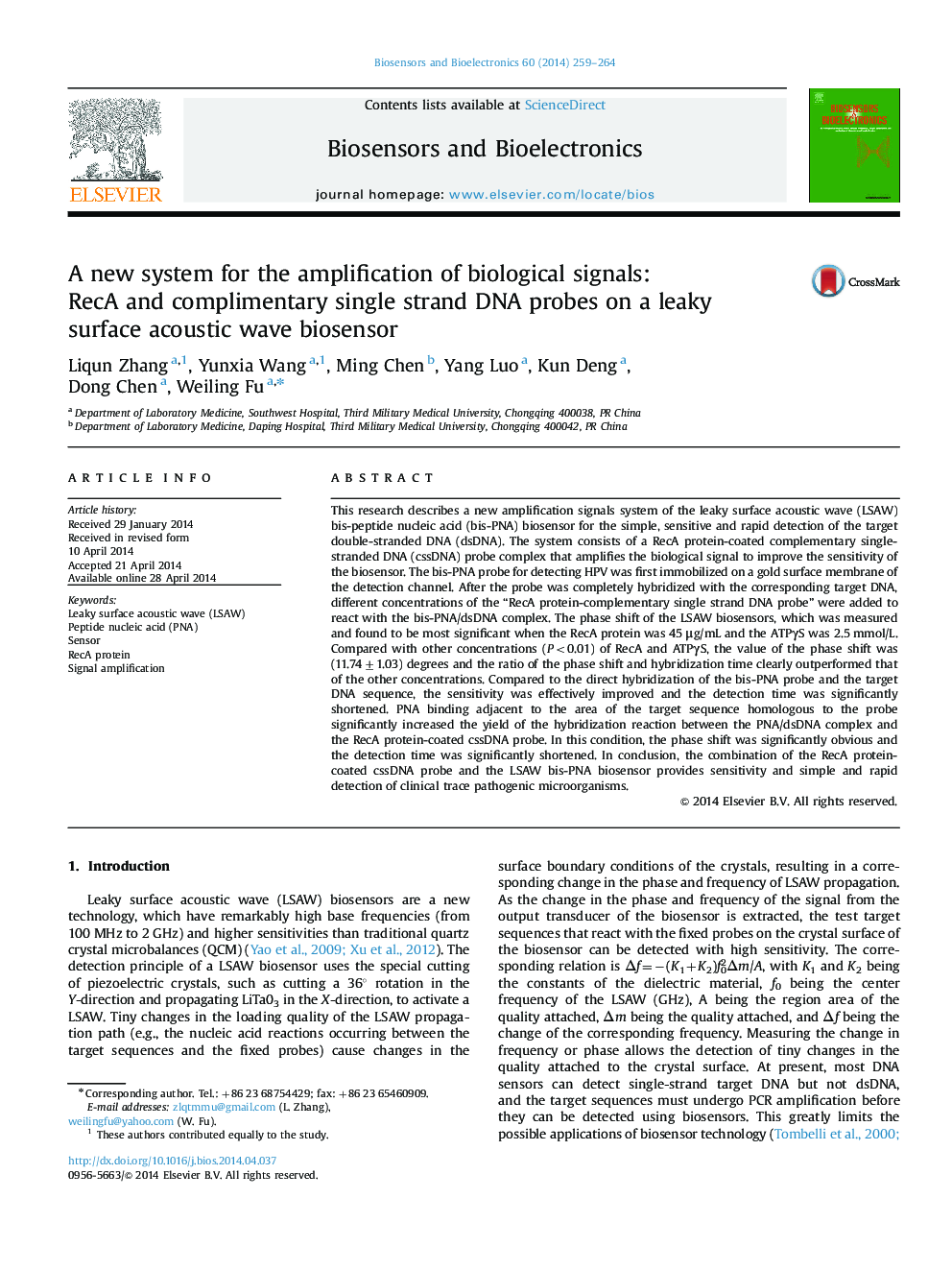| Article ID | Journal | Published Year | Pages | File Type |
|---|---|---|---|---|
| 866442 | Biosensors and Bioelectronics | 2014 | 6 Pages |
•A new system biological signal amplification system of LSAW biosensor was developed.•The method for signal amplification detection without PCR.•The method allows the early detection of trace pathogenic microorganisms.•The strategy provided a simple, rapid and high selective versatile platform.
This research describes a new amplification signals system of the leaky surface acoustic wave (LSAW) bis-peptide nucleic acid (bis-PNA) biosensor for the simple, sensitive and rapid detection of the target double-stranded DNA (dsDNA). The system consists of a RecA protein-coated complementary single-stranded DNA (cssDNA) probe complex that amplifies the biological signal to improve the sensitivity of the biosensor. The bis-PNA probe for detecting HPV was first immobilized on a gold surface membrane of the detection channel. After the probe was completely hybridized with the corresponding target DNA, different concentrations of the “RecA protein-complementary single strand DNA probe” were added to react with the bis-PNA/dsDNA complex. The phase shift of the LSAW biosensors, which was measured and found to be most significant when the RecA protein was 45 μg/mL and the ATPγS was 2.5 mmol/L. Compared with other concentrations (P<0.01) of RecA and ATPγS, the value of the phase shift was (11.74±1.03) degrees and the ratio of the phase shift and hybridization time clearly outperformed that of the other concentrations. Compared to the direct hybridization of the bis-PNA probe and the target DNA sequence, the sensitivity was effectively improved and the detection time was significantly shortened. PNA binding adjacent to the area of the target sequence homologous to the probe significantly increased the yield of the hybridization reaction between the PNA/dsDNA complex and the RecA protein-coated cssDNA probe. In this condition, the phase shift was significantly obvious and the detection time was significantly shortened. In conclusion, the combination of the RecA protein-coated cssDNA probe and the LSAW bis-PNA biosensor provides sensitivity and simple and rapid detection of clinical trace pathogenic microorganisms.
